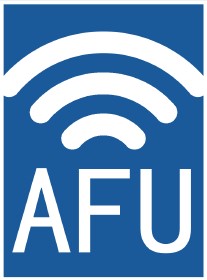In the world of telecommunications, we often hear about the exciting advancements in radio technology, like 5G speeds and massive MIMO. However, the true intelligence and processing power behind these wireless signals lie in a less glamorous but critically important piece of equipment: the Baseband Unit (BBU).
This article provides a deep dive into what a BBU is, how it works, the different types available, and its evolving role in the architecture of modern networks.
What is a Baseband Unit (BBU)?
A Baseband Unit (BBU) is a key component in a cellular network, particularly in the Radio Access Network (RAN). It is a device that processes baseband signals, which are the original frequencies of a data transmission before it is modulated onto a radio frequency (RF) carrier wave for broadcast, and after it is demodulated upon reception.
In simple terms, if the Remote Radio Head (RRH) or antenna is the "mouth and ears" of a cell site that transmits and receives radio signals, the BBU is the "brain" that does the heavy lifting of processing and managing the data.
How Does a BBU Work? Understanding the Core Principles
The BBU's primary function is to convert data between digital form (used by the network core) and radio frequency form (used for over-the-air transmission). This process involves several key steps:
1. Downlink (Transmission) Processing:
Data Reception: The BBU receives user data and control signals in digital form from the network's core via backhaul (e.g., fiber optic cable).
Channel Coding & Modulation: It performs complex digital signal processing (DSP) tasks. This includes:
Channel Coding: Adding error correction codes (e.g., Turbo codes, LDPC in 5G) to protect the data from errors during transmission.
Modulation: Mapping the digital bitstream onto a complex radio waveform (e.g., using QPSK, 64-QAM, 256-QAM) to maximize data throughput.
Beamforming Precoding: (For advanced systems) Calculating the optimal signal phase and amplitude for each antenna element to steer beams towards specific users.
Digital-to-Analog Conversion (DAC): The processed digital signal is converted into an analog waveform.
Signal Forwarding: This analog baseband signal (often in the form of I/Q data) is then sent over a high-speed fiber link (using CPRI or eCPRI protocols) to the Remote Radio Head (RRH) or Active Antenna Unit (AAU).
The RRH/AAU then upconverts this signal to the desired radio frequency, amplifies it, and transmits it through the antenna.
2. Uplink (Reception) Processing:
The reverse process occurs for signals received from users:
The RRH/AAU receives the RF signal, downconverts it to baseband, and converts it to a digital signal.
This digital signal is sent to the BBU over the fiber link.
The BBU performs demodulation (extracting the digital data from the radio waveform) and decoding (correcting any transmission errors using the previously added codes).
The clean, retrieved digital data is then packaged and sent to the core network.
Key Types of BBUs and Architectural Evolution
The concept of the BBU has evolved significantly, leading to different types and architectures:
1. Traditional BBU (Integrated with RRU):
In early cellular systems, the baseband and radio functions were combined into a single cabinet at the base of the tower, connected to antennas via coaxial cables. This was inefficient due to significant signal loss in the cables.
2. Distributed RAN (D-RAN) with BBU + RRH:
This was a major innovation. The radio function was separated and placed near the antenna as a Remote Radio Head (RRH), eliminating cable loss. The BBU remained at the ground level, connected to multiple RRHs via fiber optic cables. This is a very common architecture for 3G and 4G networks.
3. Centralized RAN (C-RAN) with BBU Pooling:
C-RAN takes distribution a step further. Multiple BBUs from several cell sites are relocated and centralized into a single, powerful data center or central office, forming a "BBU pool." This offers tremendous advantages:
Resource Pooling: Processing resources can be dynamically shared among many cell sites based on traffic demand, improving efficiency.
Cost Reduction: Easier maintenance, lower site rental costs, and reduced power consumption.
Enhanced Coordination: Enables advanced features like Coordinated Multi-Point (CoMP), where multiple sites can coordinate to serve a user, reducing interference.
4. Virtualized BBU (vBBU) and Cloud RAN:
This is the future and present of 5G networks. Here, the BBU's software functions are decoupled from the proprietary hardware and run as Virtualized Network Functions (VNFs) on standard, commercial off-the-shelf (COTS) servers in a cloud data center.
vBBU: The software that performs the baseband processing is virtualized.
Benefits: This brings ultimate flexibility, scalability, and agility. Network capacity can be scaled up or down instantly with software, and new features can be deployed rapidly without replacing hardware.
The BBU in the 5G Era: A Shift to DU and CU
With 5G, the traditional BBU's functions have been split into two logical entities to support greater flexibility (Network Function Virtualization) and lower latency:
Central Unit (CU): Handles less time-sensitive, higher-layer protocols (e.g., RRC, PDCP). It often operates in a centralized cloud data center.
Distributed Unit (DU): Handles time-sensitive, lower-layer protocols (e.g., RLC, MAC, parts of PHY). It is located closer to the radio site to meet strict latency requirements.
A RU (Radio Unit) replaces the RRH. This CU/DU split architecture allows operators to distribute processing in the most efficient way possible for different 5G use cases.
Conclusion
The Baseband Unit has been, and continues to be, the engineering powerhouse of mobile networks. From its beginnings as an integrated hardware box to its current evolution into virtualized software running in the cloud, the BBU's journey mirrors the evolution of telecommunications itself. As we push further into the 5G and future 6G eras, the principles of intelligent, flexible, and centralized baseband processing will remain at the core of delivering the high-speed, low-latency, and connected world we rely on.

